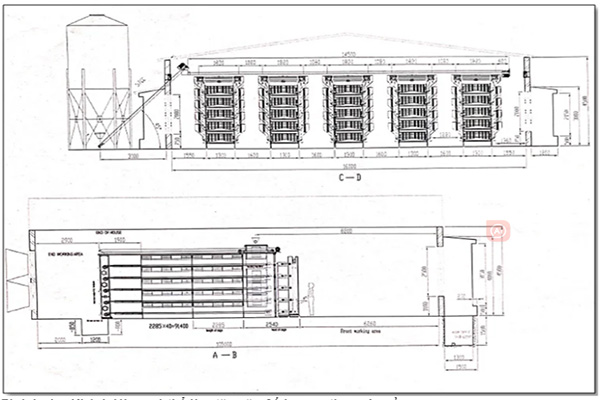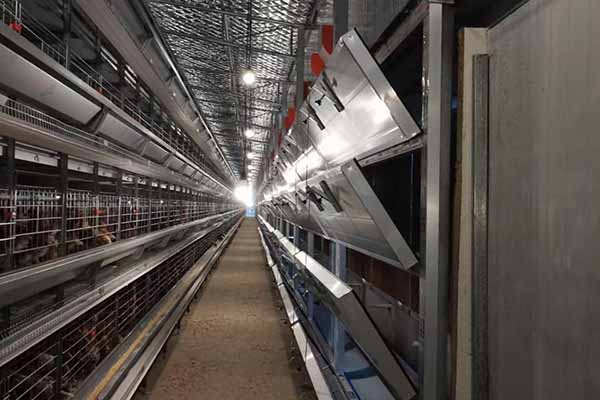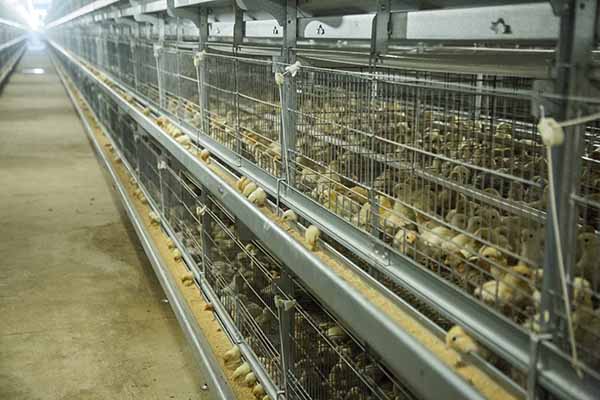Pullet Layer and Broiler Chicken Cage Systems: A Comprehensive Guide
Time : 2025-06-27
Chicken farming, whether for layer hens or broiler chickens, is a critical industry globally. The efficiency and health of the birds are dependent on the quality of the equipment used, particularly the chicken cages. This article delves into the intricacies of pullet layer and broiler chicken cage systems, offering a comprehensive guide for poultry farmers looking to optimize their operations.

Understanding Pullet Layer Chicken Cages
Pullet layer chickens are bred for egg production, and their living conditions are critical to ensure high productivity and egg quality. The following are key aspects of pullet layer chicken cage systems:
Design and Construction
The design of pullet layer chicken cages is aimed at maximizing space utilization, ease of cleaning, and the overall comfort of the hens. These cages are typically constructed with stainless steel or galvanized steel to ensure durability and resistance to corrosion. The dimensions of the cages are carefully calculated to provide ample space for the hens to move around, lay eggs, and exhibit natural behaviors.
Environmental Control
Temperature, humidity, and air quality are crucial factors in the health and well-being of layer hens. Pullet layer chicken cages are equipped with systems to control these environmental parameters. Fans, heaters, and humidity controllers are commonly integrated into the cage design to maintain optimal conditions year-round.
Egg Collection Mechanisms
Efficient egg collection is essential to minimize breakage and ensure continuous egg supply. Pullet layer chicken cages often feature automated egg collection systems that gently guide eggs into a collection tray, minimizing the risk of damage and reducing labor requirements.
Broiler Chicken Cages: A Different Approach
Broiler chickens are bred for meat production, and their growth rate is signi ficantly higher than that of layer hens. The following are the key considerations for broiler chicken cage systems:
ficantly higher than that of layer hens. The following are the key considerations for broiler chicken cage systems:
Space Allocation
Broiler chickens require more space than layer hens due to their rapid growth. The cage design for broilers typically allows for more room per bird, ensuring that they can grow without unnecessary stress or injury. The size of the cage is also a factor in the overall efficiency of the farming operation.
Ventilation and Temperature Control
Broiler chickens generate a lot of heat as they grow, so effective ventilation is crucial to prevent overheating. Broiler chicken cages are designed with ventilation systems that can handle the increased heat output, while also maintaining a consistent temperature range that supports healthy growth.
Feeding Systems
Automated feeding systems are commonly used in broiler chicken cage operations. These systems ensure that the birds receive the correct amount of feed at the right time, optimizing growth rates and reducing waste.
Choosing the Right Chicken Cage System
Selecting the appropriate chicken cage system for your poultry operation is a critical decision. The following factors should be considered:
Production Goals
Understanding your production goals, whether for egg or meat production, will guide you in choosing the right cage system. Layer hens require different living conditions than broiler chickens, so aligning your goals with the appropriate cage design is essential.
Initial Investment and Long-Term Costs
The initial cost of a chicken cage system can be significant, so it’s important to consider the long-term costs, including maintenance, energy consumption, and potential upgrades.
Health and Welfare of the Birds
The health and welfare of the birds should always be a top priority. The cag e system should facilitate easy monitoring and management, as well as minimize stress and discomfort for the birds.
e system should facilitate easy monitoring and management, as well as minimize stress and discomfort for the birds.
Conclusion
Effective pullet layer and broiler chicken cage systems are essential for successful poultry farming. By carefully considering the design, construction, environmental control, and other factors, poultry farmers can create an optimal living environment for their birds, leading to increased productivity and profitability.











